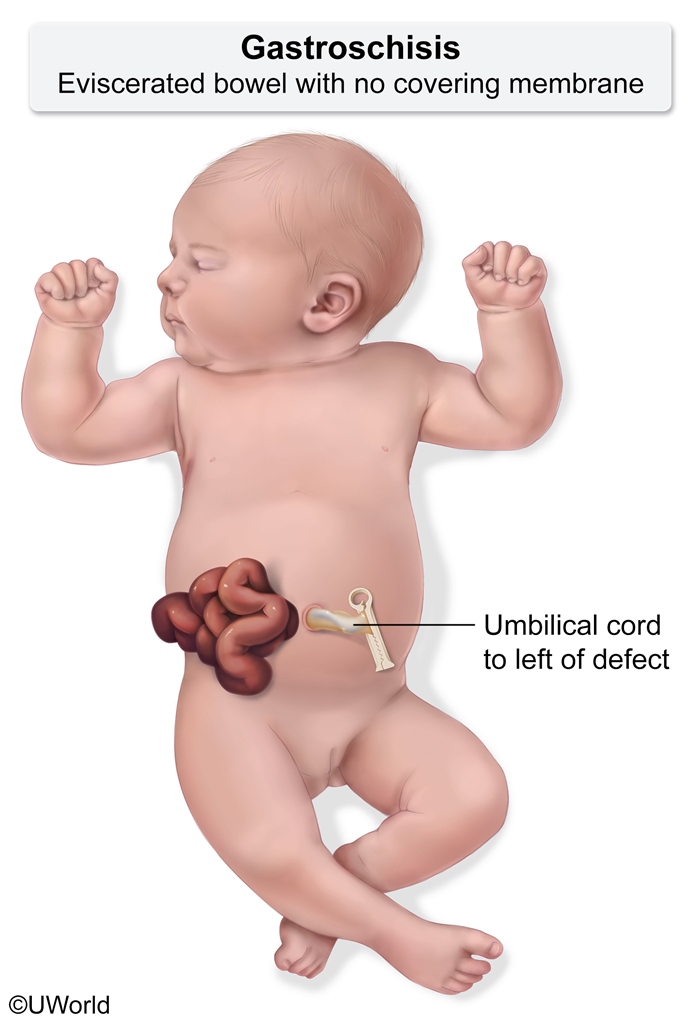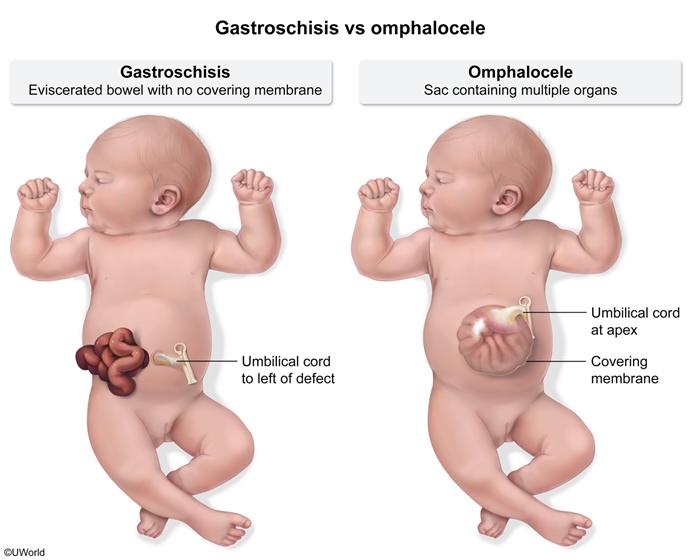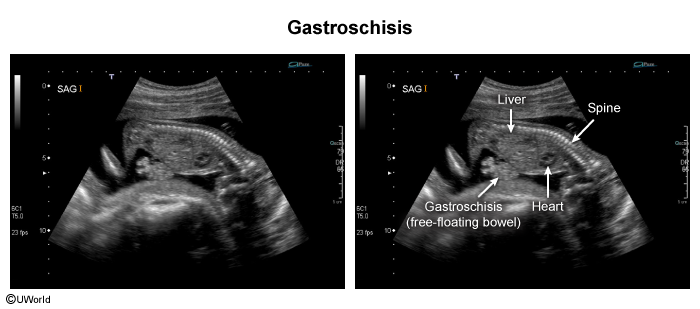Gastroschisis
Article Sections
Introduction
Gastroschisis is a congenital anomaly characterized by bowel herniation through a full-thickness paraumbilical abdominal wall defect.
Pathophysiology and risk factors
Gastroschisis occurs due to improper formation of the abdominal wall during embryonic development (Figure 1). The abdominal defect is full-thickness, allowing the bowel to herniate into the amniotic cavity without an overlying membrane. Because the herniation is adjacent to the umbilicus (ie, paraumbilical), the umbilical cord insertion site is unaffected.
Although the exact cause of gastroschisis remains unclear, it is likely multifactorial. Risk factors include maternal age <20, maternal smoking, and family history of gastroschisis.
Clinical presentation and diagnosis
Patients with gastroschisis are born with evisceration of the bowel through a paraumbilical abdominal wall defect. Gastroschisis can be associated with other gastrointestinal anomalies (eg, malrotation, atresia), likely due to vascular disruption associated with the herniated intestines. In contrast, extraintestinal anomalies are rarely associated with gastroschisis.
Continue Learning with UWorld
Get the full Gastroschisis article plus rich visuals, real-world cases, and in-depth insights from medical experts, all available through the UWorld Medical Library.
Figures


Images
